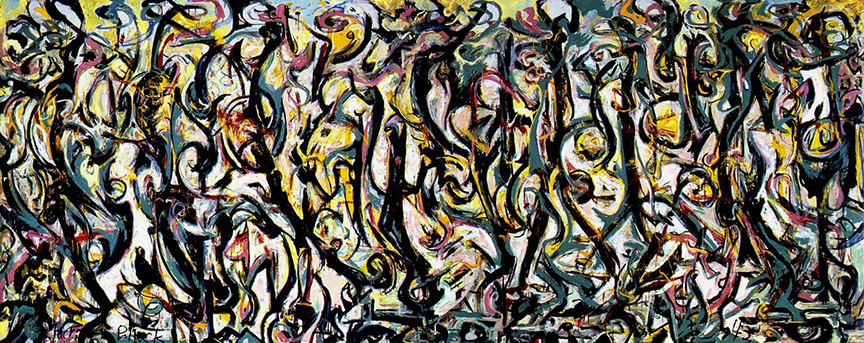According to popular myth, Jackson Pollock created his masterpiece Mural in a single artistic frenzy. While the painting was actually created over the course of a summer, it still looks like the aftermath of an explosion. By throwing and splattering paint onto his enormous canvas instead of carefully painting representational figures, Pollock changed the face of American art.
How art is created has a huge effect on what you create – and how people experience it. In the 21st century, artists are still pushing the boundaries and create new abstract experiences. Instead of canvases and house paint, their tools are code and gadgets – from Photoshop plugins to interactive installations. Here are three ways that artists are using motion control technology to create their own abstract explosions.
Interaction can be a form of art
If the Mona Lisa smiles in the dark, is it still art? In darkened galleries, warehouses, and climate-controlled storage facilities around the world, art pieces exist without anyone looking at them. This is how we usually understand art – as Things that can be admired from a distance. Paintings and sculptures and bonsai trees are all objects that have a life of their own.
But interactive art is different. The viewer becomes part of the piece. Otherwise the piece doesn’t exist. While traditional art relies on physically designed objects, newer experiments like The Aether Project focus on how interaction design can also be a form of artistic expression.
Hidden interfaces create a sense of wonder
It’s hard to feel immersed in an interactive art installation when the wires are visible. By concealing motion control technology inside podiums or 3D-printed cases, interactive artists make it possible for viewers to reach directly into the worlds they’ve created. Connexion Point brought together stories created through a mobile web app with Leap Motion interaction to create a social-media-inspired art experience:
As the Leap Motion technology is relatively unknown in the realm of public art, using the controller allowed us to create a bit of magic. It elevated the experience beyond that of a touchscreen, and by incorporating it into a podium, we were able to further that magical experience. Most large-scale installations are touch-based – where participants have to stand too close to the screen, losing the impact of the piece as a whole.
Small actions become metaphors for life
Interactive installations are much more than fancy visuals tied to our movements – they help us express important truths through our actions. Created to illustrate how we impact the environment around us, Growth puts the choice in your hands. Slow movements help nature and brighten the trees of a virtual forest, while aggressive motions summon dark spikes. It told a story more powerfully than words alone.
Artificial intelligence, social media, the environment – what big ideas would you like to see made giant, interactive, and flashy? Let us know in the comments.
Pollock’s Mural courtesy of WikiPaintings.


[…] Around the world, artists and developers are using the Leap Motion Controller to break down the boundaries between art and human beings. This week on Developer Labs, we have a table transformed into a musical instrument, creative software reinvented, and how artists are using motion control to change how we experience art. […]
May 22, 2014 at 6:22 am[…] museums to retail centers and hackathons, the Leap Motion Controller can bring a little magic to interactive exhibits. Here’s a quick design guide to help installation artists and developers get […]
July 5, 2014 at 8:01 am[…] How artists are using motion control to change how we experience art […]
July 12, 2015 at 3:22 pmAmazing possibilities 😉
I m wondering how is possible, as Growth designer did, to project on a irregular shape.
I would like to use an already made app and configure it according to the geometry of the projection surface.
Is a matter of mask?
thank you,
Lea
February 20, 2016 at 2:07 am[…] artists are finding that there are ways to alter viewers experiences when looking at art. Motion control, according to Leap Motion, can have a great effect on how people perceive art. First of all, this […]
March 18, 2016 at 5:12 pm